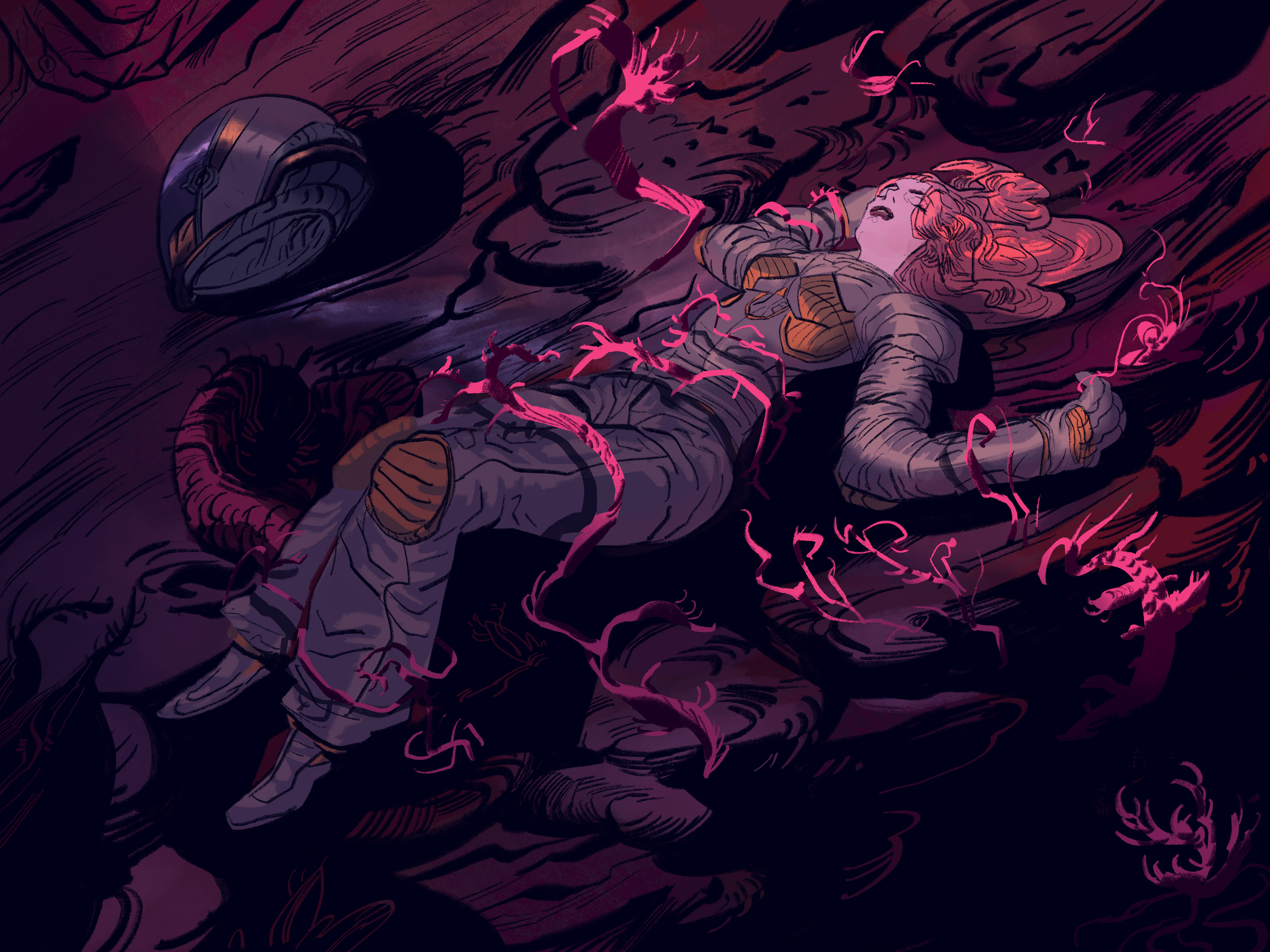In Los Ageless, the waves they never break
They build and build until you don't have no escape
But how can I leave?
I just follow my hood to the sea, go to sleep
a.k.a. "your players asked what's going on with Earth while they're out on the Rim being torn to pieces by space demons".
 |
| The Fifth Element |
Earth.
Cramped, polluted, and teeming with people, the heart of mankind still beats. Slowly, laboriously.
With 27 billion inhabitants and a vastly inefficient global economy straining the ecosphere of what was once humanity's very own garden planet, Earth is wracked by squalor, natural disasters and government repression. The average Terran lives off of a measly federal welfare (most jobs having been automated long ago), has never eaten anything that wasn't synthesized from genetically modified algae, keeps a tsunami survival kit under the bunk of their tiny assembly line hab-block, and is told every day how privileged they are to live in humanity's cradle.
 |
| artist: Jon Hrubesch |
The unflattering picture of Earth changes drastically, of course, if you happen to be one of the mega-rich. Here, unimaginable luxuries are available if you can pay - the most prized of which is Mother Nature itself. With the planet's natural areas rapidly dwindling, the Earth Federal Governing Authority has placed astronomical admission fees on entering its natural reserve areas, the so-called Green Zones, ostensibly to cover the increasing costs of reversing ecological collapse. Only the richest inhabitants of Earth can afford to view the remaining few patches of nature on the mother planet, congratulating themselves on their charitable works as they funnel billions of credits into what have been essentially reduced to private parks for the 0.001%.
 |
| Elite: Dangerous |
All of this, of course, is swept under the rug in Terran media, where glossy megastars and ad campaigns showcase the far reach of Earth to its dejected citizens. TV lotteries promise vacation trips to faraway planets, brought to heel by Terran manifest destiny. Talk show hosts pose with corporate dignitaries and rimspace colony leaders. VR films, free television programming, news feeds all regurgitate steady, uninterrupted prolefeed - lurid, sex-obsessed commercials, old-corporate propaganda, and never-ending soap operas about the lives of important people.
As the oldest economy in the human sphere, many of the most ancient megacorps are heaquartered here - some ossified and dynastic, some fragmented and self-consuming. These fossilized old-corps constantly vie for control over space with the upstart neocorps that sprung up out in the colonies, as well as each other, perverting every political institution supposedly representing all humanity into pieces in their great game. Earth's governance is a tangle of backroom politics and corporate interests puppeteering state offices, with a thin gauze of representative democracy painted on top.
Despite being the most densely urbanized planet in human-inhabited space by a large margin, Earth exports almost nothing, save for sleazy and propagandistic entertainment, colonial arrogance and gunboat diplomacy. Most of its economic production is tied up in keeping its largely unemployed population fed and housed, by the most generous definitions of both "fed" and "housed". The majority of the rest goes to accommodating pilgrims and tourists, 552 million of whom visit the planet's incredibly manufactured open-air museums - corp-friendly, sterilized versions of old Earth settlements - each year.
 |
| Judge Dredd: Mega-City Two |
- An especially tenacious breed of mind-altering alien parasite infected the water filtration systems of a mega-racktower, carried planetside by a gaggle of tourists slumming it with the hab-blockers. Go in there and smoke the little fuckers out before they decrease the revenue growth of the water treatment company too much.
- There's a new drug on the streets - go check it out and see if the boss can get in on the trade too. Secretly, the drug is manufactured and distributed by SynThac LLC, and causes addicts to commit false-flag eco-terrorist attacks, with corporate police ready to swoop in and save the day.
- A colossal organism crawled out of the Atlantic Ocean and was promptly gunned down by the point defense systems at Manila. Corpse-diving becomes a veritable gold rush - perhaps you can make it big selling genome samples, or even kaiju caviar!
- The brand new SweetDreams chips (double the sleep in half the time!) are the latest fad in neuro-implant chips... but sleepers suddenly begin to receive strange and disturbing dreams through the implants, urging them to return to apedom.
- Through a miraculous stroke of luck, you all won a dinner with Medusa McClyde, the queen of crackle music! Meet the idol in the five-star restaurant atop the Kampala Space Elevator, and try to survive the night amid ever-present media surveillance, trigger-happy bodyguards, and the bizarre and horrific proclivities of Ms. McClyde herself.
 |
| Hong Kong |












